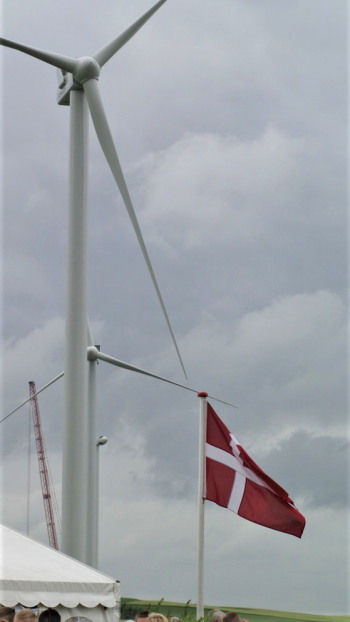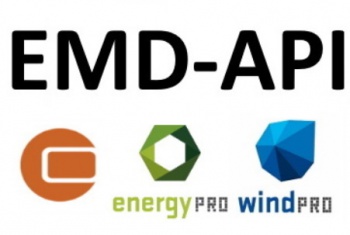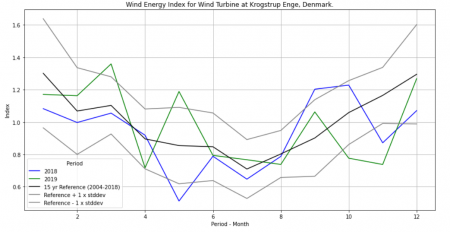EMD-API - Wind Energy Index Service


Introduction
The Wind Energy Index Service is available as a global service - providing reliable wind-index information for turbine locations in any part of the world. The service is available from a REST / OPENAPI interface. This page describes how to install the service - and how to consume it from a Python client. Resources for the OpenAPI standard and the data model are here:
- OpenAPI-standard - at Swagger / Smartbear
- OpenAPI Specification and Data Model - at GitHub.
Please note:
- This EMD-API introduction is aimed at programmers, modellers or analysts who are working with machine-driven interfaces and workflows, typically using programming languages like Python or R.
- Also note, that we provide a Python (Jupyter Notebook) example to get you kick-started in using our API-services and to integrate towards your own services and tools.
Access
The API is currently (December 2020) in beta-release. To see more documentation and to access the data-services, please visit the API through the following URL's:
- EMD-API Overview (Wiki) - here.
- EMD-API Main Page (API) - here.
- EMD-API Wind Energy Index UI (API) - here.
Any technical questions on our Wind Energy Index Services can be addressed to our Senior Wind Energy Consultant Henrik S. Pedersen: hsp@emd.dk.
Data Model - Wind Energy Index Service
The EMD Wind Energy Index Service is documented in a REST based API using the OpenAPI Specification. You can view the interfaces and download the interfaces as JSON or YAML, here. The service provides the following functionality:
- List Turbines: Available turbines with their identification ID. The list is private and will return all turbines connected to your account.
- Turbine Details: Name, data-availability, hub-height, position-latitude, position-longitude, power-curve, control-strategy, rated-power, training-start, training-end, time-zone.
- Wind Energy Index Data: Month-wind-index, month-anomaly-index, month-predicted-production, last-quarter-index, last-12-months-average-index
- Request data for all months between 1990 and present
- Request data for specific month between 1990 and present
Reference index period is the 15-year period from 2004-2018 (both years inclusive). Currently, the following parameters are returned from the wind-energy-index tables:
- month_index: Wind energy index for current month (seen in comparison to reference period of 2004-2018)
- month_abnormality_index: Deviation of current month seen in comparison to average-index of the same month in full reference period (e.g. index for January-2020 divided by average-January-2004-2018).
- last12_month_index: Average index of the previous 12 month (including the month of consideration) compared to reference period (2004-2018).
- predicted_production: Estimated production for the month (kWh).
- last_full_quarter_index: Average index for the previous calendar quarter (e.g. when requesting data from 2019-02 (February), this index returned will be from 2018-Q4)
- last_full_year_index: Average index for the previous calendar year (e.g. when requesting data from 2019-02 (February), this index returned will be from 2018)
Python - Installation

The simplest way to use the EMDAPI with Python is to install the client software in a virtual environment. If you are using CONDA or MINICONDA, we recommend that you create a new virtual environment and use a recent 3.x version of Python. When the virtual environment is created, then activate the environment.
Open your Anaconda Prompt. Copy-paste the following lines:
conda create -n emdapiwindindex python=3.8.5 conda activate emdapiwindindex
Install the required packages needed in order to do data-science and use the examples provided within the Jupyter Notebooks. We have validated this setup using specific package versions (used in the commands below).
In the Anaconda Prompt, copy-paste the following lines, one by one:
conda install -c conda-forge pandas=1.1.0 numpy=1.19.1 matplotlib=3.3.1 pyproj=3.0.0 conda install -c conda-forge jupyter=1.0.0 ipykernel=5.3.4 pip install tilemapbase
Download the zip-file holding the OpenAPI Python client for the emdapi wind-index-service.
Unpack the file and install it within your virtual environment:
In the Anaconda Prompt: Move to the folder, where you have unpacked the zipped file. Copy-paste the following line:
python setup.py install
Python and Jupyter Notebook Examples for Demonstration and Test

In order to test your setup and learn how-to use the EMDAPI Wind Energy Index Service, we suggest that you download our Jupyter Notebook and Python examples - here.
Unpack the zip files and run the command below in your terminal or command-shell.
If Jupyter prompts for you to select another Python-kernel, then select the emdapiwindindex kernel (may also be selected directly from the 'Kernel' drop-down menu).
In the Anaconda Prompt: Move to the folder, where you have saved the Jupyter Notebook examples. Copy paste the following line to open Jupyter Notebook from where you can open the examples.
jupyter notebook
Within the internet-browser (and Jupyter user-interface), run select the Jupyter Notebook file (*.ipynb).
Then work your way through the example provided:
- emdapi_windindexservice.ipynb Demonstration of login to the system, plotting turbine data and requesting wind-energy-index data.
- emdapi_windindex_python.py: Python code to demonstrate API login and requests for data (to execute - simply run python emdapi_windindex_python.py in your conda environment)
Make sure that the new emdapi virtual environment (python-kernel) is available to be used with Jupyter Notebook environment:
python -m ipykernel install --user --name=emdapiwindindex
Client Software Other Languages and Tools
REST and OpenAPI is easily consumed from a lot of software tools. It is perfectly possible that your preferred language is supported. OpenAPI works well with languages such as - but not limited to - C#, R, Python, Java, PHP, Scala and Swift. Just download the YAML or JSON service description and use the Swagger Editor or OpenAPI Generator to generate the client libraries for your preferred software. Then you are ready to integrate towards your preferred systems and workflows.
To generate the client libraries yourself - one possible approach is to: